Abstract
1. The conversion of 2-hydroxy-4-methylthiobarbituric acid into methionine requires a flavine coenzyme, which can be partially replaced by NAD or NADP, and glutamine, which can be partially replaced by asparagine. The system also requires aerobic conditions. 2. There does not appear to be a requirement for a metal ion: Mn2+ is slightly inhibitory and Cu2+ is strongly inhibitory. 3. Of the kidney, liver, brain, small intestine and muscle, the kidney possesses the greatest conversion activity/g. of tissue, but on a total organ basis the liver is the more important organ. Within the liver cells most of the activity is present in the supernatant fraction.
Full text
PDF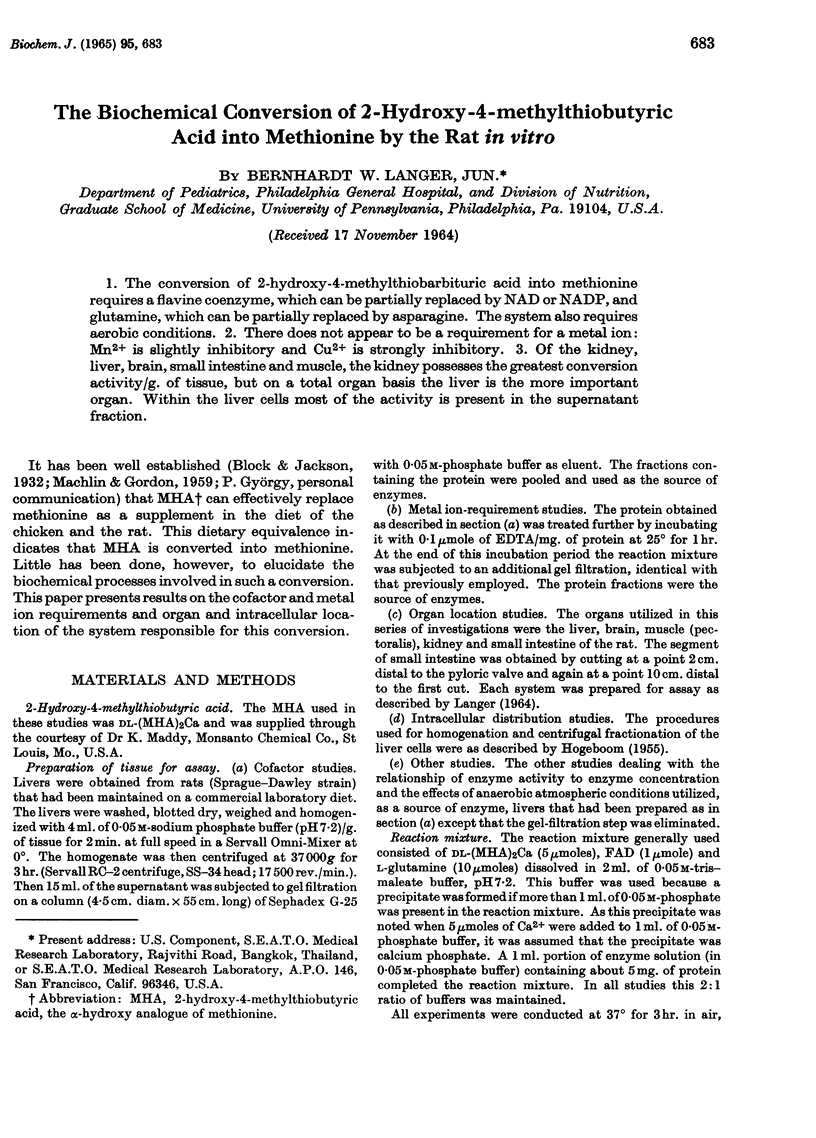
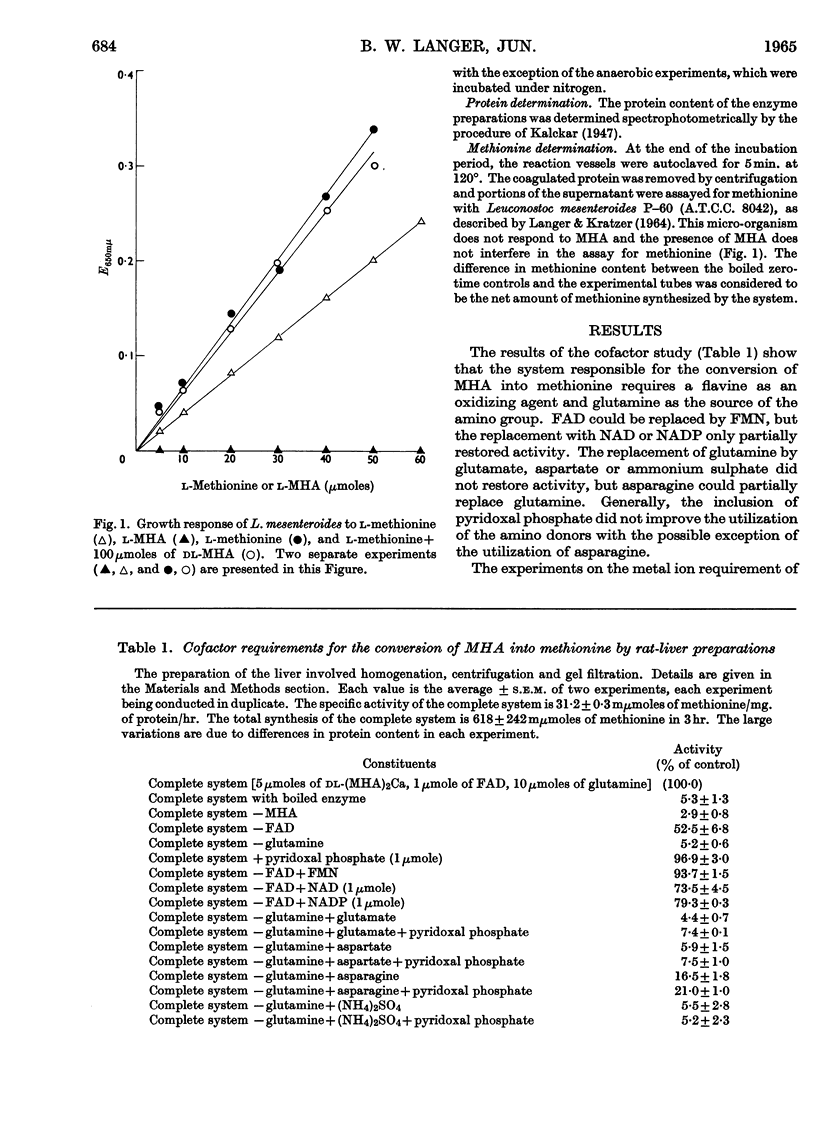
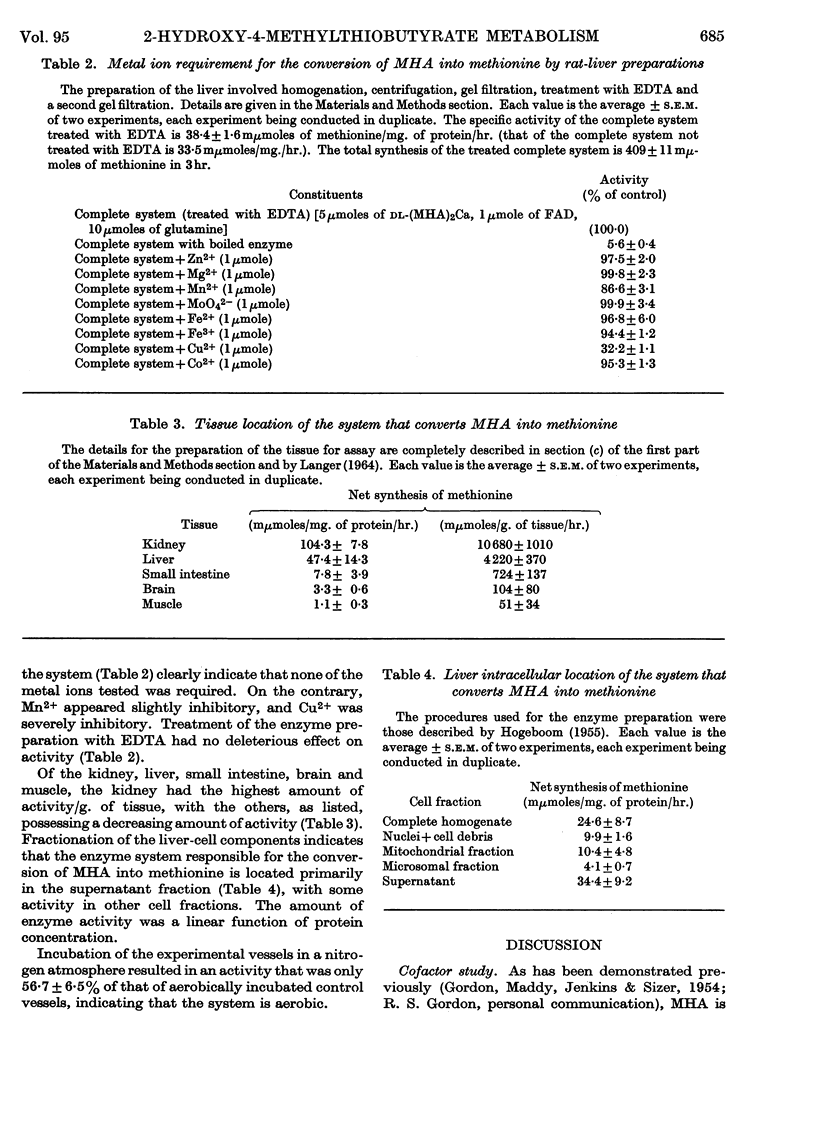
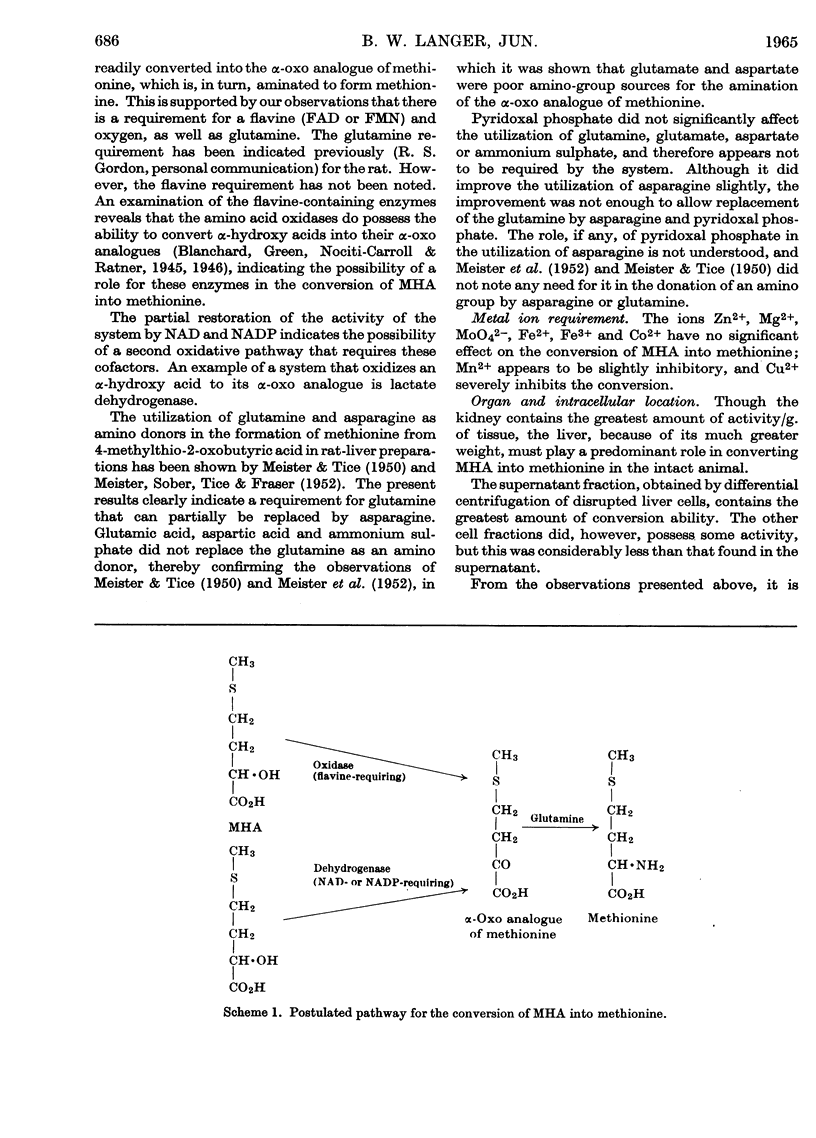
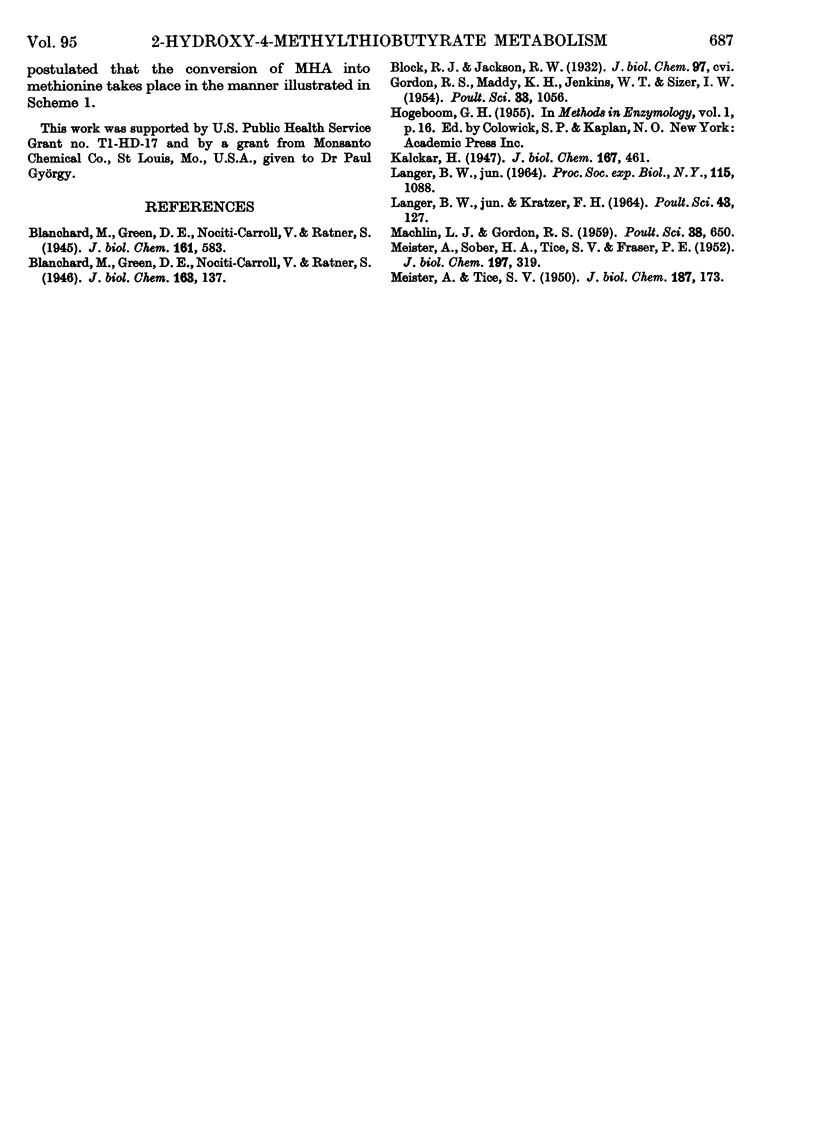
Selected References
These references are in PubMed. This may not be the complete list of references from this article.
- MEISTER A., SOBER H. A., TICE S. V., FRASER P. E. Transamination and associated deamidation of asparagine and glutamine. J Biol Chem. 1952 May;197(1):319–330. [PubMed] [Google Scholar]
- MEISTER A., TICE S. V. Transamination from glutamine to alpha-keto acids. J Biol Chem. 1950 Nov;187(1):173–187. [PubMed] [Google Scholar]


